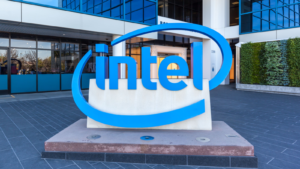The seven following stocks have been carefully selected based on thorough research and analyses. These companies span across different sectors and industries, offering investors a diversified set of opportunities.
Some of these companies are contrarian takes on companies that other investors have overlooked as being unattractive. However, with the right thesis in mind, investors can tap into these lucrative opportunities and potentially increase their risk-adjusted returns over the long haul.
So let’s delve into the seven bargain stocks to buy that will make you say, “I’m glad I did.”
Coterra Energy (CTRA)

Coterra Energy (NYSE:CTRA) focuses on U.S. natural gas and oil production. It offers a healthy dividend and free cash flow growth expected to reach $1.7 billion by 2025.
CTRA offers a dividend yield of 3.06%, with an annual dividend of 84 cents per share. The company pays its dividend quarterly, with a payout ratio of 49.12%. CTRA has shown significant dividend growth, with a 310% increase over the past year. The buyback yield stands at 1.69%, contributing to a total shareholder yield of 4.75%.
With it being priced at around $27.48, this company trades at a bargain, made better by its short-term outlook.
For 2024, CTRA increased its oil production outlook to 107,000 barrels of oil per day (bopd), up from the previous guidance of 102,000 bopd, driven by strong well performance and faster cycle times. The company expects total production between 625,000 and 655,000 BOE/d for the current quarter.
Starbucks (SBUX)

Starbucks (NASDAQ:SBUX) is a global coffeehouse chain with strong brand recognition and a robust growth strategy €‹. It appears undervalued because of its long-term growth prospects in the industry.
Its current price-to-earnings (P/E) ratio is 22.81, with a forward P/E ratio of 20.13, indicating expectations of earnings growth. The price-to-sales (P/S) ratio stands at 2.57, with a forward P/S ratio of 2.34, suggesting revenue growth potential.
The company offers a dividend yield of 2.73%, with an annual dividend of $2.28 per share. Starbucks pays its dividend quarterly, with a payout ratio of 62.81%.
For 2024, Starbucks expects double-digit revenue growth in China, driven by new store performance and strong comparable sales. The company plans to continue its expansion. Also, the Starbucks Rewards loyalty program saw a 13% increase in active members, reaching 34.3 million in the U.S.
Therefore, SBUX offers investors capital growth and income combined with a solid competitive moat and growth headwinds at a cheap price.
Intel (INTC)

Intel (NASDAQ:INTC) is a major player in the semiconductor industry. It is focusing on expanding its manufacturing capacity to meet future demand.
In Q1 of 2024, Intel reported revenue of $15.4 billion, surpassing the expected $15.15 billion. Adjusted EPS was $0.54, beating the anticipated $0.45. However, the outlook for Q2 of 2024 is less optimistic, with predicted EPS of $0.13 on sales between $12.2 billion and $13.2 billion.
The semiconductor industry is notoriously cyclical and volatile, which is needed for the impressive gains it has seen over the last decade for investors. The short-term headwinds then should be expected and irrelevant for an investor who has a long-term orientation.
Its current P/E ratio is 31.28, with a forward P/E ratio of 21.36, indicating expectations of future earnings growth. Additionally, the PEG ratio of 0.43 indicates that the stock is undervalued considering its expected earnings growth. This makes INTC one of those bargain stocks to buy.
ZIM Integrated Shipping Services (ZIM)

ZIM Integrated Shipping Services (NYSE:ZIM) reported strong financial performance in Q1 of 2024, with revenues reaching $1.56 billion and a net income of $92 million. However, the stock’s P/E ratio of -1.00 reflects the challenges the company faces.
In terms of valuation, ZIM appears undervalued based on several financial metrics. The P/S ratio is 0.51, indicating a low market valuation relative to its revenue. The price-to-book (P/B) ratio stands at 1.07, suggesting the stock is trading close to its book value.
ZIM offers a dividend yield of 1.08%, with an annual dividend of $0.23 per share. The next ex-dividend date is June 4, 2024. However, management has shown that it is willing to pay out substantial dividends to shareholders when economic conditions are stronger, such as in March 2022, when it paid an incredible $17 per share.
ZIM is cheap on a valuation basis, as well as its income potential.
Nokia (NOK)

Nokia (NYSE:NOK) is a telecom giant focusing on 5G technology. Despite challenges, it has secured multiple 5G contracts globally.
In Q1 of 2024, Nokia reported net sales of EUR 4.67 billion, a 20% decrease year-over-year (YOY). The gross margin improved significantly to 47.9%, up from 37.5% in Q1 of 2023. The company achieved an operating profit of EUR 400 million.
For 2024, Nokia’s outlook remains positive, with an expected comparable operating profit between EUR 2.3 billion and EUR 2.9 billion. The company anticipates free cash flow conversion from comparable operating profit of 30% to 60%.
NOK appears undervalued based on several key financial metrics. Its P/E ratio is 24.69, with a forward P/E ratio of 11.85, indicating that the market expects significant earnings growth. The P/S ratio stands at 0.88, suggesting the stock is trading at less than one times its annual sales, which is relatively low for its industry.
Caterpillar (CAT)

Caterpillar (NYSE:CAT) is the world’s largest manufacturer of construction equipment. It has consistently delivered strong financial results.
In Q1 of 2024, Caterpillar reported sales and revenues of $15.8 billion, roughly flat compared to Q1 of 2023. The operating profit margin was 22.3%, up from 17.2% in the same period last year. Adjusted profit per share was $5.60, a 14% increase from $4.91 in Q1 of 2023.
However, what makes CAT cheap is from an income perspective and the net shareholder yield. The price-to-free-cash-flow (P/FCF) ratio of 22.39 highlights the company’s ability to generate cash relative to its stock price. Also, the company offers a dividend yield of 1.59% with an annual dividend of $5.20 per share. The dividend payout ratio is very stable at 23.50%. Caterpillar has a strong track record of dividend growth, having increased its dividend annually over the past 31 years.
Infinera (INFN)

Infinera (NASDAQ:INFN) is a leader in optical transport networking equipment. It’s also one of the cheapest options on this list.
The bull thesis for INFN stock is as follows. Infinera is focusing on expanding its market share among hyperscalers and service providers, expecting these segments to drive significant revenue growth.
For 2024, Infinera expects to generate significant revenue and margins from its new 400-gig XR pluggables and GX family products. The company aims to achieve a GAAP gross margin approaching 40% and continued revenue growth.
INFN appears undervalued based on its low price-to-sales ratio of 0.83 and forward PS ratio of 0.76, which indicate the stock is trading at a relatively low valuation compared to its revenue. Additionally, the forward P/E ratio of 18.65 suggests potential earnings growth that is not fully reflected in the current stock price.
On the date of publication, Matthew Farley did not have (either directly or indirectly) any positions in the securities mentioned in this article. The opinions expressed are those of the writer, subject to the InvestorPlace.com Publishing Guidelines.
Matthew started writing coverage of the financial markets during the crypto boom of 2017 and was also a team member of several fintech startups. He then started writing about Australian and U.S. equities for various publications. His work has appeared in MarketBeat, FXStreet, Cryptoslate, Seeking Alpha, and the New Scientist magazine, among others.
